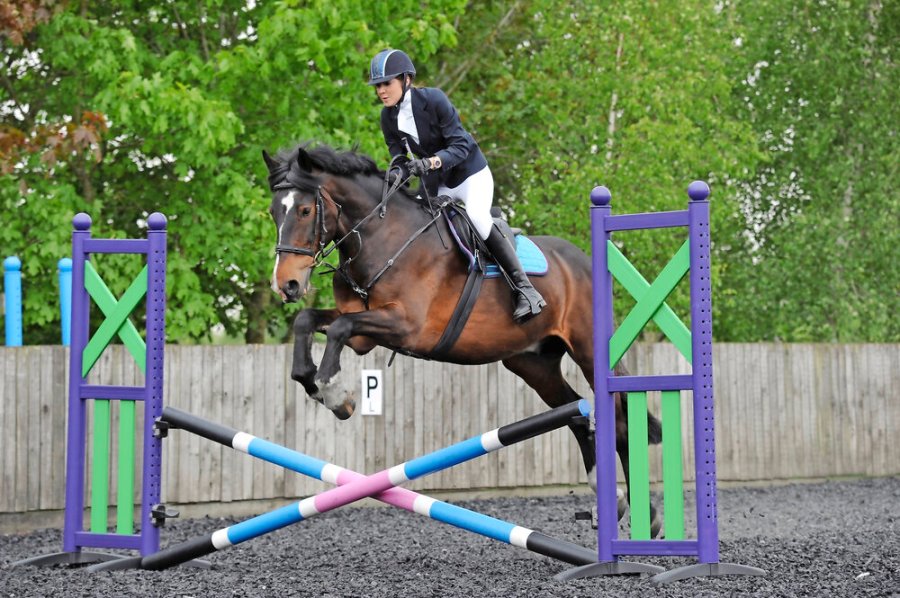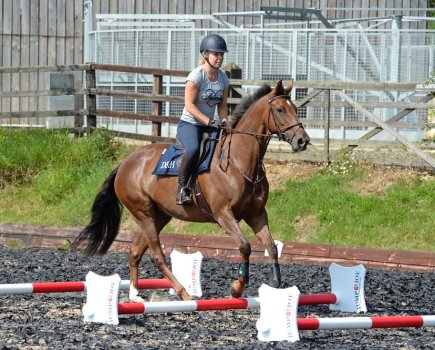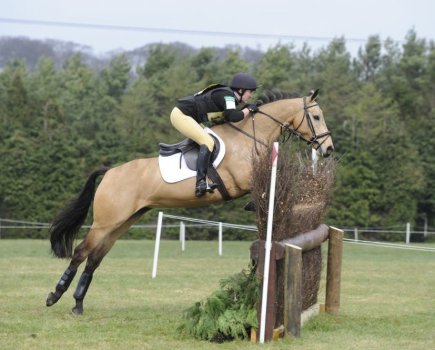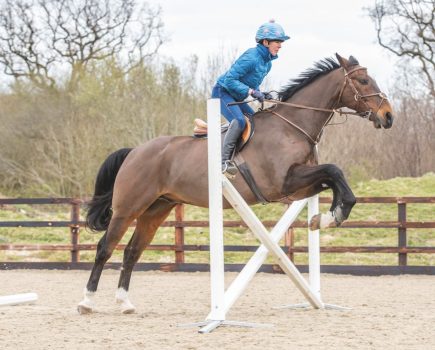Showjumper and trainer Jay Halim answers your jumping dilemmas.
Stirrup length
It always used to be the rule that you would put your stirrups up two holes for jumping, but watch the experts in action and you’ll see that people are riding longer these days.
I certainly prefer to ride longer and, as a guide, I think your stirrups are the right length when you can feel the irons knock against your ankle bone when you take your feet out of the stirrups.
At the end of the day, it’s a personal thing. When I was eventing I spent a lot of time riding in a dressage saddle, so I feel more comfortable riding longer, even when jumping, as it gives me a better feel.
But it also depends on how your horse jumps and what type of saddle you ride in, so play around with your stirrup length to see what works for you and gives you the most confidence.
Jumping ditches
Start in the school or a fenced off area of the field, and ask your horse to walk over a strip of tarpaulin or plastic on the ground. I’m lucky in that I have proper water trays in my school, but you can improvise — just ensure that anything you use is properly secured so that it can’t lift and flap around.
Simply walk up to the ‘ditch’ at first, stay calm and don’t kick or flap with your legs. Instead, give your horse plenty of opportunity to stretch his neck down and have a good look at whatever it is you’re asking him to tackle.
Ride positively and ask him to walk over it. It can help to have someone on foot to give you a lead, and it can also be useful to ride in the arena with a calm, confident horse who can walk across it first in front of you.
It’s very important to give your horse time. This type of training can’t be rushed — you don’t want your horse racing up to a ditch when he’s out on the cross-country course and jumping it with his eyes shut.
Once your horse is ready, progress to tackling small ditches outside of the arena. Again, have someone with you —either on foot or riding a schoolmaster who can give your horse a lead. We would never take a young horse cross-country schooling on his own.
Walk up to the ditch and allow your horse all the time he needs to have a good look and assess the situation before he pops over it. Ride positively, but stay calm and, again, don’t flap about in the saddle. Progress to trot only once he’s happy and confident in walk, and don’t overface him by doing too much too soon.
Investing in a jumping saddle
In a nutshell, I’d say that if it ain’t broke, don’t fix it! If money’s no object, then of course the cut of a good jumping saddle will make a difference to your position over a fence, but a GP saddle does what it says on the tin, and if you’re happy in yours I don’t see any reason to change just for the sake of it.
If you do decide that you want to trade up, most saddle companies have a range of jumping saddles. Put simply, the main difference between a GP and a jumping saddle is that the saddle flaps are more forward cut and the seat is a little flatter. This allows you to ride comfortably with shorter stirrups and stay secure while jumping.
Don’t miss the latest issue of Your Horse Magazine, jam-packed with training and veterinary advice, horse-care tips and the latest equestrian products, available now.









